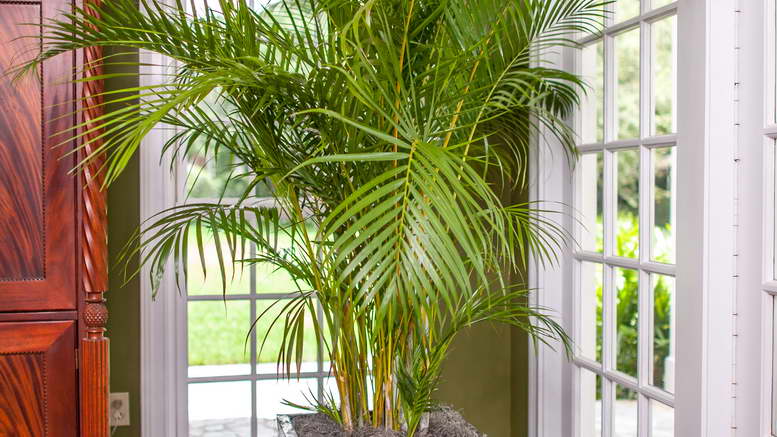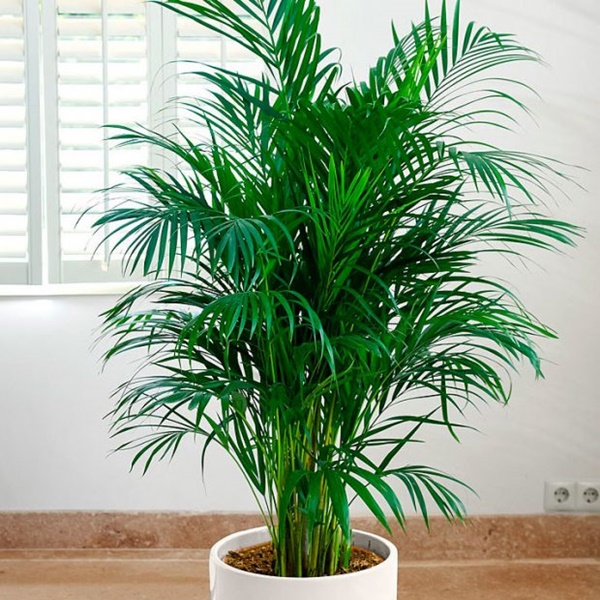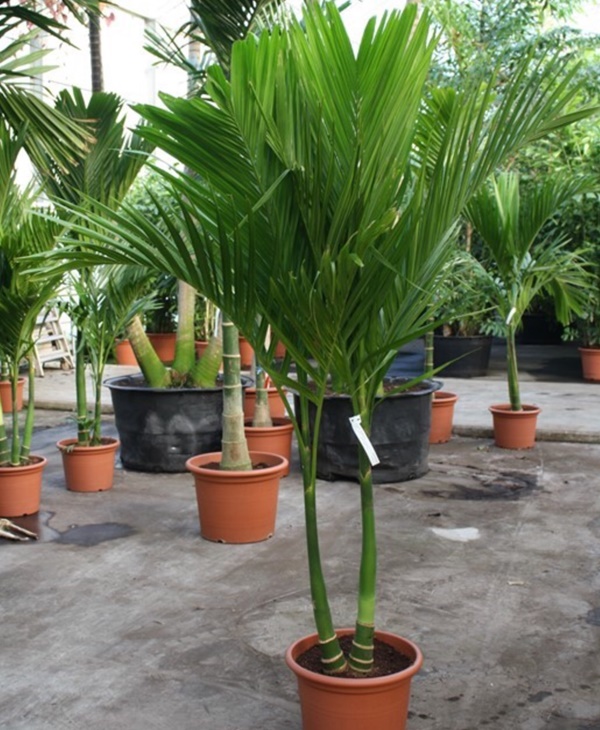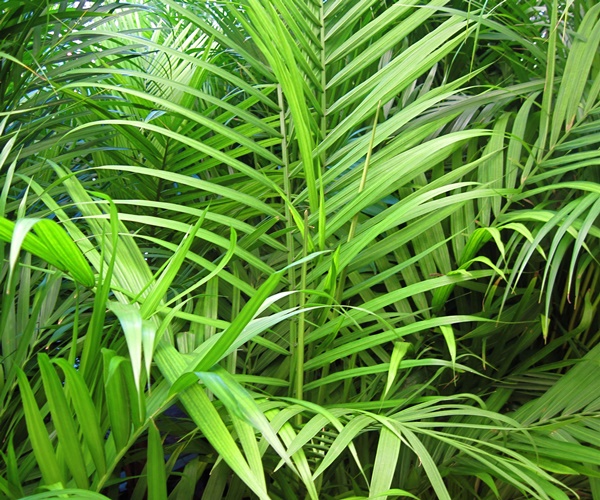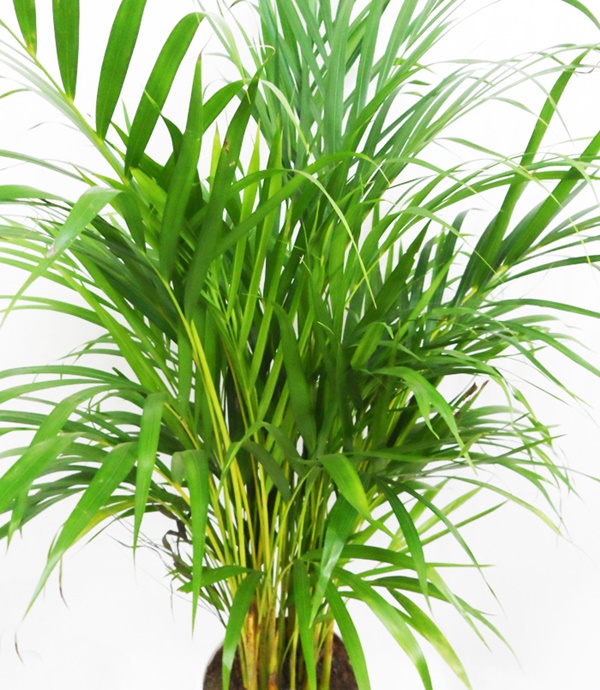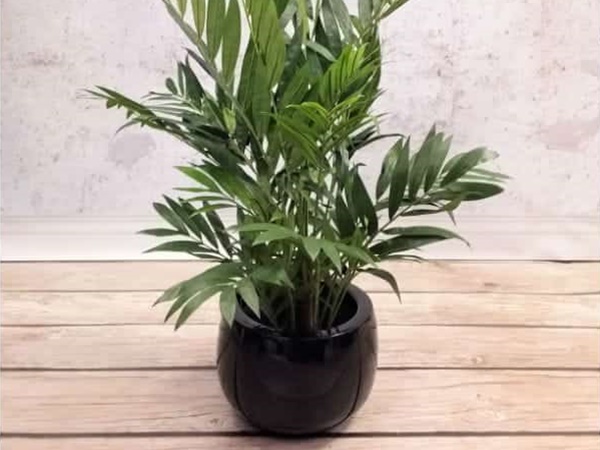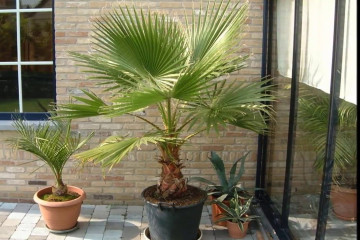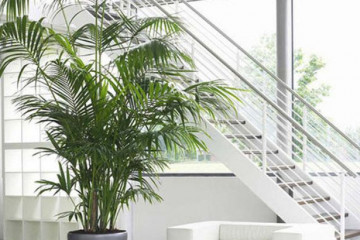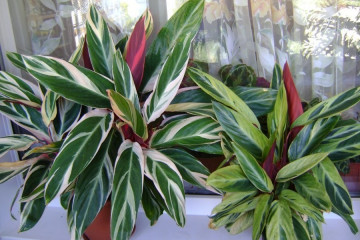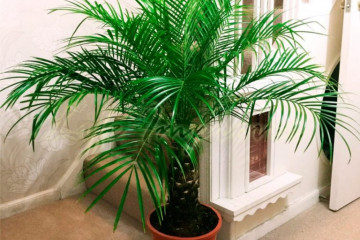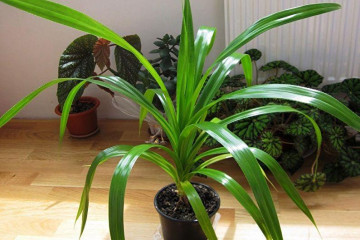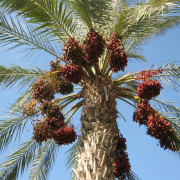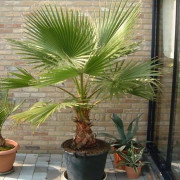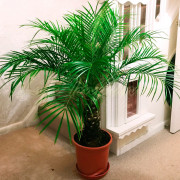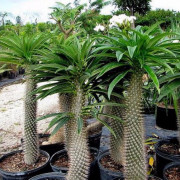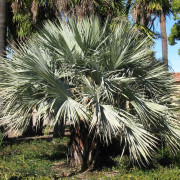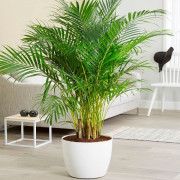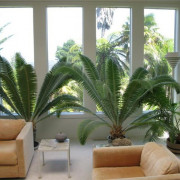Areca palm - home care and reproduction
Content:
Many people prefer to decorate the interior with palm trees. One such home-grown plant is the areca. With a beautiful appearance, it can enhance the style of any room. Further, in relation to the areca plant, home care, types, features are considered.
By providing the right maintenance to this member of the Palm family, the florist can get fast growth and a lush crown.
Areca species
Cultures like these especially add coziness to large spaces. Greens saturate the air of an office or room with oxygen. The domesticated areca palm creates an exotic feel, reminiscent of the rainforest.
Its leaves, like wide feathers, look very impressive. The size and lush greenery are surprising. Many species grow successfully inside dwellings. Examples are:
- Areca varieties Katechu;
- Chrysalidocarpus;
- three-stalked palm.
The natural areas of the areca Katechu species are East Africa, Asia, and the Pacific coast. There is another name - the Bethel tree. Residents of Malaysia and all regions where it grows eat the fruits of this plant because of its stimulating properties. In their opinion, this is a benefit for the body, although in fact, with frequent use, such food is poisonous and causes poisoning.
The plant is used for landscaping gardens, while growing up to 20 meters, with a stem 10-50 cm thick. The leaf reaches a length of 2 meters. Palm Katechu shows good acceptance as an inhabitant of hotel and cottage lobbies. In a closed room, the tree does not bear fruit, grows more slowly.
The homeland of the yellowish Chrysalidocarpus is Madagascar. Palm tree features are as follows:
- In nature, it grows up to 10 m.
- It has dense branches at the base, like a bush.
- The greens are dark, the leaves are up to 2 m, similar to feathers, reaching a width of 1 meter.
This plant of the areca genus gives sophistication and grace to large halls and offices.
The three-stalked palm came from the Malacca island. Several trunks 5 cm thick at once grow up to 3 m. White flowers are very fragrant, leaves of 1.5 m have a somewhat drooping appearance.
Areca from the Palm family has over 50 species. They differ:
- dense, feathery foliage that has a bright green color;
- thin stem with scars - rings;
- under the crown, the formation of inflorescences of the type of ears occurs.
Areca flower is small, with shades close to white, closed in shape. The fruit is a drupe no more than 7 cm. White-pink seeds are formed.
Home care
Decorative palms are very popular in indoor floriculture. The evergreen areca plant in the house is an exotic that originally grew in a tropical climate, it does not require complex maintenance. Greens will delight for a very long time.
Growth can be called fast: the speed is such that in 4 years the plant reaches its maximum size. Areca catechu varieties are especially popular among florists.
For proper development, it is required to keep the culture with sufficient light and provide watering. The most acceptable are scattered rays, although in partial shade, under direct sun, the culture also feels good.At lunchtime, it is advisable to protect the plant from the scorching heat. For symmetry growth, the container should be rotated twice a month.
Pot selection
Considering which areca palm prefers home care, it is important to pay attention to the capacity for growth. A lot of transplants will be required, because the roots require an increase in space every year. Planting is carried out in a well-drained container in which water flows freely through the holes after watering. The volume of the pot should have a margin of 4 cm from the edge so that the roots are spacious.
Watering and humidity
High humidity is considered the norm for this plant. The culture will also tolerate a moderate value, but a significant decrease will worsen the decorative qualities: the leaf plates will become narrow, the tips will dry out. If you follow the rules of cultivation, you will be able to get a beautiful appearance. One of them is watering as needed when the soil starts to dry. Excess moisture in the soil leads to the fact that the roots begin to deteriorate, up to death.
Temperature regime
A young plant tolerates temperatures up to -6 degrees for a short period. Prolonged exposure to 0 Celsius results in damage and even death. A full life assumes the temperature of the earth clod from the root system from 21 to 27 degrees. The air should not be heated above 35.
Top dressing and fertilizers
In the spring and summer, you need to feed the plant twice a month. Complex fertilizers are used. In winter and autumn, the frequency is reduced to a monthly procedure. Up to 6 years old, in winter, they give liquid fertilizing three times a month, after watering the roots. Flowering also needs nourishment. An example of ready-made compositions is "Flower Happiness".
Growing and transplanting problems
Areca should be repotted regularly. Sometimes it is necessary to divide the bush into separate pots. Immediately after the purchase, select the soil for rapid growth, provide drainage so that the moisture quickly leaves and does not stagnate. Apply perlite, pebbles, pumice. Add sand and peat, wood chips. The soil includes pine bark, charcoal. Repotting is recommended in April with a slightly larger pot. An earthen lump must be preserved by making a transfer The procedure is repeated annually or once every 3 years. A developed root system with a felt layer needs pruning.
Speaking about the peculiarities of cultivation, it is necessary to mention the period of winter dormancy. Do not leave the plant in frosty air for a long time. Care should be taken, rarely watering, once a week, focusing on the topsoil.
Diseases and pests typical of areca
Like any culture, Areca will help you get sick. For example, the appearance of red-brown or black spots on the leaves. If you do not take action in the form of treatment, the damaged areas will merge into continuous necrosis. Prophylaxis is to provide adequate lighting and to keep the number of sprays to a minimum.
Excessive watering leads to the death of the roots. Seeds and seedlings are also affected. Of insects, spider mites, scale insects, whiteflies attack. If this happens, it is necessary to carry out an insecticide treatment.
Reproduction methods
Areca blooms in a panicle with small cream or yellow flowers are rarely seen at home. This is only possible with good care. If the phenomenon has arisen, sufficient humidity and illumination are needed, the temperature is from 22 to 28 degrees. Then the purple fruits ripen with seeds that can be sown. Another way a crop can propagate is by splitting the bush.
Seeds
Before sowing, the seeds must be soaked in sulfuric acid for 10 minutes. Then they are planted in the prepared substrate and the container is placed in partial shade, waiting for seedlings. Reproduction by this method assumes the fact that the seeds are poisonous, you need to protect them from children and animals.
By dividing the bush
The bush is removed from the container, the bark system is freed from the soil. Several plants are manually isolated and immediately planted and watered. Next, you need to put the palm tree in the light at a temperature of 20 or 25 degrees, humidified air. Then they wait for the soil to dry out and water it again. It takes several weeks for rooting, after which top dressing is done.
Areca is an exotic plant that is successfully grown indoors and decorates the house. In order for everything to work out, it is necessary to optimize the factors of temperature, watering and lighting.
